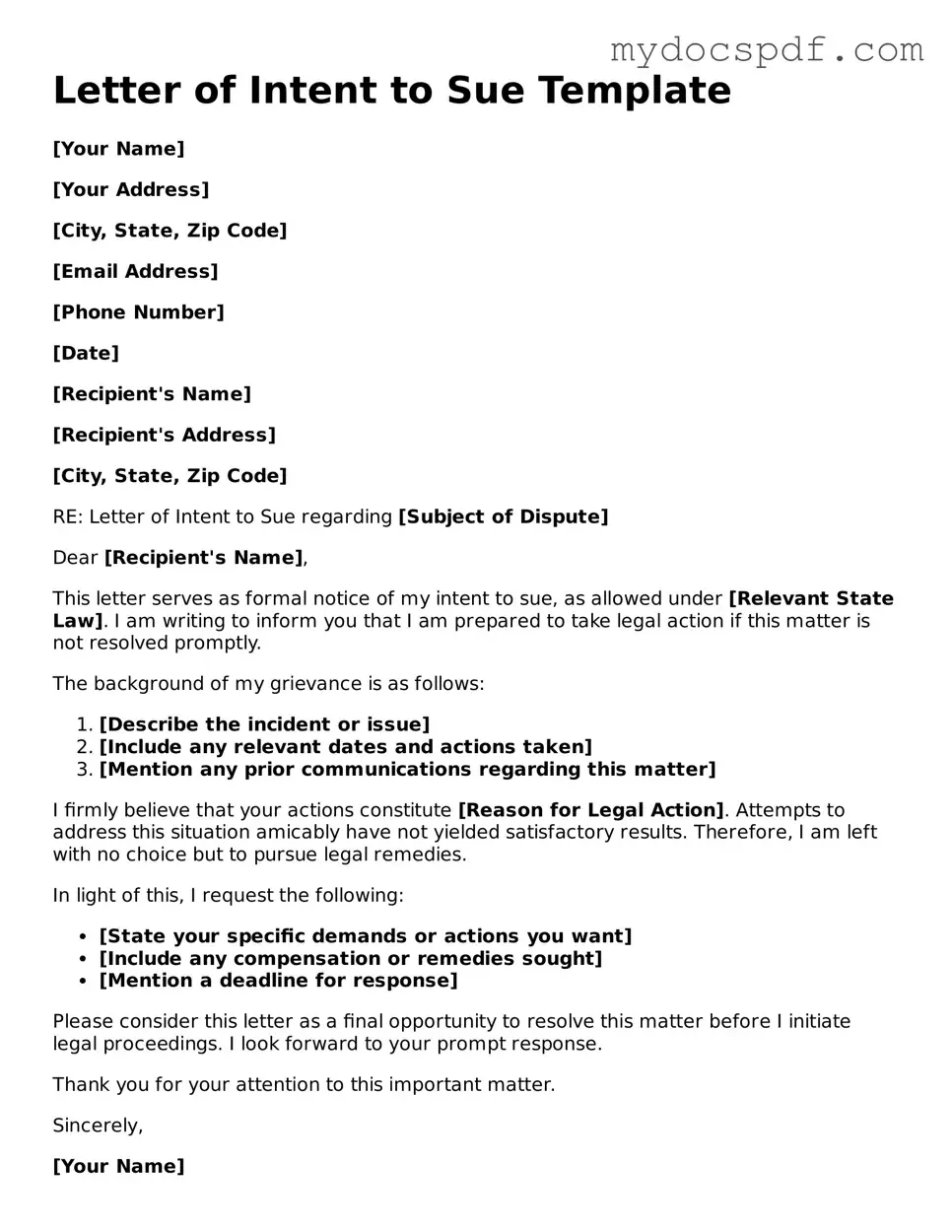Letter of Intent to Sue Template
[Your Name]
[Your Address]
[City, State, Zip Code]
[Email Address]
[Phone Number]
[Date]
[Recipient's Name]
[Recipient's Address]
[City, State, Zip Code]
RE: Letter of Intent to Sue regarding [Subject of Dispute]
Dear [Recipient's Name],
This letter serves as formal notice of my intent to sue, as allowed under [Relevant State Law]. I am writing to inform you that I am prepared to take legal action if this matter is not resolved promptly.
The background of my grievance is as follows:
- [Describe the incident or issue]
- [Include any relevant dates and actions taken]
- [Mention any prior communications regarding this matter]
I firmly believe that your actions constitute [Reason for Legal Action]. Attempts to address this situation amicably have not yielded satisfactory results. Therefore, I am left with no choice but to pursue legal remedies.
In light of this, I request the following:
- [State your specific demands or actions you want]
- [Include any compensation or remedies sought]
- [Mention a deadline for response]
Please consider this letter as a final opportunity to resolve this matter before I initiate legal proceedings. I look forward to your prompt response.
Thank you for your attention to this important matter.
Sincerely,
[Your Name]
